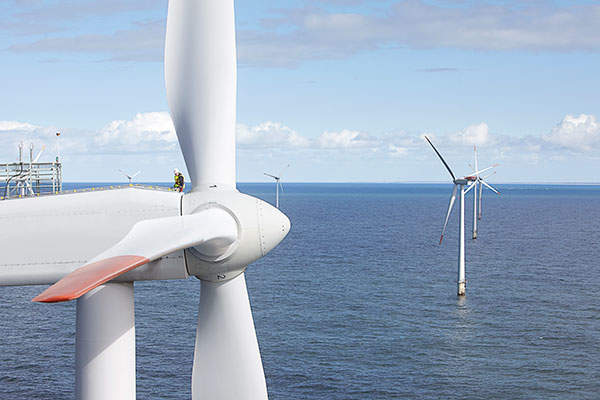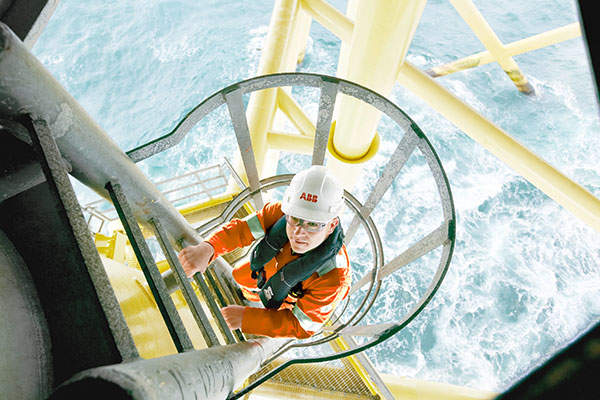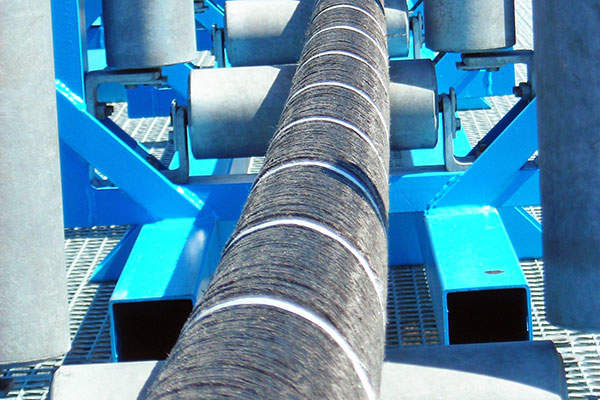Kriegers Flak is a 604MW offshore wind farm situated in the southern Baltic Sea. It is located in the waters between Denmark’s Møn region, Southern Sweden and Northern Germany.
Owned by Vattenfall, the Danish Kriegers Flak wind farm was developed with an estimated investment of kr7.6bn ($1.2bn). The Combined Grid Solution project interconnects the wind farm to the 288MW Baltic II wind farm in Germany, which is located less than 30km to the south-east. The interconnection allows fossil-free energy to be shared between Denmark and Germany.
The final investment decision on the wind project was made in December 2018. The first foundation was installed at the site in May 2020, while the first turbine was installed in early 2021. The wind farm started operations in June 2021. It will cater to the power requirements of 600,000 households a year.
Kriegers Flak project details
Covering an area of 132km², the Danish Kriegers Flak wind farm contains two parts, the western Kriegers Flak A (KFA), with a capacity of about 200MW, and the eastern Kriegers Flak B (KFB), with a capacity of about 400MW.
Each location has its own high-voltage station, which serves the wind farm and acts as an interconnector (KFE module) between the Danish and German electricity networks.
The high-voltage stations may also serve the Danish-Swedish interconnector in future.
Turbine details
The wind farm features 72 SG 8.0-167 DD turbines. Each wind turbine has a total height of 188m and is installed on a foundation weighing up to 800t. The foundations comprise a steel monopile with a concrete gravity base, jacket-type foundations and suction buckets.
The electricity generated by the turbines is transmitted to two 220kV offshore substations through inter-array cables, with a total length of 170km, laid underwater.
The turbines are serviced at the Port of Klintholm, situated approximately 100km from Copenhagen.
Grid connection and transmission
Two offshore transformer platforms, spaced approximately 6km apart, are installed to step-up the electricity generated by the wind turbines to 220kV.
From each of the platforms, an approximately 45km-long, 220kV submarine cable was laid to the coast at Rødvig on Stevns. The submarine cables were jetted into the seabed to protect them from fishing tools.
Onshore substations at Bjæverskov, Ishøj and Hovegård were developed to receive electricity from the turbines and transmit it to the existing grid (400kV). A substation was developed in Bjæverskov to regulate the voltage of the cables.
A converter facility was built at Energinet’s substation at Ishøj. The substation transmits the power to the Danish electricity grid, as well as out of Denmark when the offshore power grid is used to export electricity to Germany. The HVDC Light back-to-back converter station, the first of its kind in Europe, enabled the connection of the AC power grids of Denmark and Germany.
A transformer was installed at the project site to balance the varied transmission frequency of the Danish (150kV) and German (220kV) grids.
The power generated by the Baltic II wind farm is collected by the transformer platforms and transmitted to the Bentwisch substation in Germany. Underground cables further transmit the power from Bentwisch to the existing German transformer substation at Güstrow.
Power purchase agreement
Vattenfall signed a long-term power purchase agreement with Novo Nordisk and Novozymes, both pharmaceutical companies based in Denmark, in July 2018.
Contractors involved
ABB was awarded a contract worth more than $100m for the installation of an AC cable system to integrate and transmit power from the Kriegers Flak offshore wind farm to the mainland grid. The contractual scope included design, supply and installation of approximately 100km of high-voltage, AC, three-core submarine cables. ABB also provided an HVDC converter station.
The wind turbines were supplied by Siemens Gamesa.
LS Cable and System delivered approximately 95km of 220kV cables to connect the offshore wind turbines to the Bjæverskov and Ishøj substations.
Nexans was awarded a contract to deliver approximately 20km of 400kV cables, used to reinforce the power grid between the Ishøj and Hovegaard substations.
NIRAS prepared the environmental impact assessment report and conducted environmental studies for the offshore wind farm.
Hollandia Offshore, along with Croonwolter & dros, manufactured and supplied the topsides for three offshore platforms.
The monopile foundations for the 72 wind turbines were manufactured by EEW Special Pipe Constructions. Transition pieces were delivered by Bladt industries.
Offshore construction company Van Oord provided installation and transport services for the foundation and transition pieces using the vessel Svanen.
JDR Cable Systems supplied 33KV aluminium inter-array cables, which were installed by Global Marine. JDR subcontracted Tekmar Energy for 151 patented sealed hang-off clamps for the project. Global Marine subcontracted Tekmar to provide 150 patented Teklink cable protection systems to safeguard the subsea array cables.
Two gravity-based foundations for offshore platforms were built and installed by Jan de Nul group. The Rambiz vessel was used for the installation.
Combined Grid Solution project details
Danish national transmission operator Energinet, Germany-based 50Hertz (formerly Vattenfall Europe Transmission) and Swedish company Svenska Kraftnät partnered and conducted a feasibility study for the development of a unique offshore electricity grid (common grid solution) in the Kriegers Flak region in 2010.
However, Svenska Kraftnät withdrew from the project, citing the unfeasibility of the construction of offshore wind farms in the Swedish part of Kriegers Flak.
The Combined Grid Solution is the world’s first international offshore power grid. It uses cables to exchange electricity between Denmark, Sweden and Germany. The grid facility is financially backed by the European Commission.
The project includes the construction of three offshore wind farms in the waters owned by the respective countries, which will be connected to the common grid. The 604MW Kriegers Flak wind farm acts as a Supergrid, supplying renewable energy to the three countries through the power grids.
The two German wind farms, Baltic I and II, were integrated into the Combined Grid Solution in 2020, resulting in an additional exchange of 400MW between the Denmark east area and German bidding area. The Combined Grid Solution interconnector for Krieger Flak was inaugurated in November 2021.
Details of Swedish Kriegers Flak wind farm
In May 2022, Vattenfall received a permit to build an offshore wind farm on the Swedish Krieger’s platforms, located 30km south of Trelleborg in the Swedish southern Baltic Sea.
Swedish Kriegers Flak will be constructed with 40 to 50 wind turbines to produce a total power of approximately 640MW, with an expected annual production of about 2.6TWh.
Swedish Kriegers Flak is expected to be completed in 2028.











